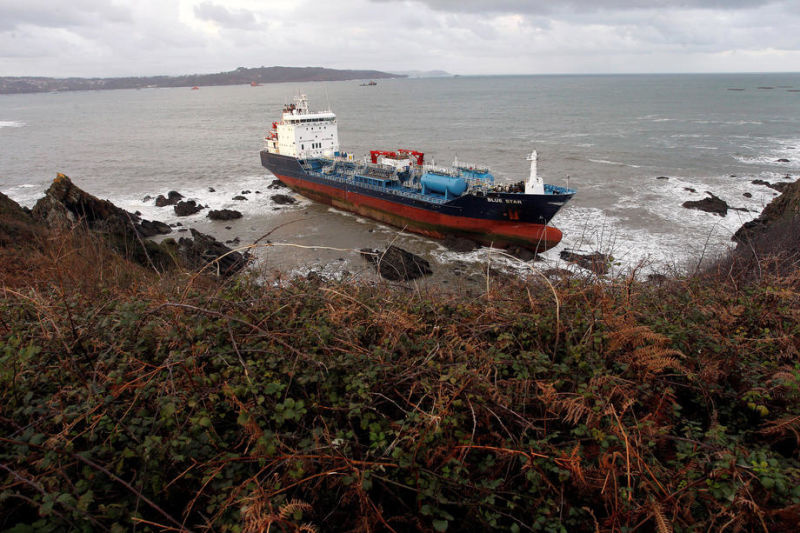Full Scope Details of Incident
Chemical tanker Blue Star ran aground at around 2230 UTC Nov 22, 2019 on a coast in Ares area, just north of La Coruna, Spain. The tanker was moving from La Coruna anchorage to Ferrol, to load a cargo of chemicals, but loss of control occured after an engine room fire and subsequent electrical blackout resulting in the loss of propulsion severely effecting vessel control. The vessel ran aground in reportedly bad weather.
Local salvage refloat efforts were unsuccessful in the immediate following days after the incident. Smit was contracted to head up the operation as a result.
The Blue Star’s cargo tanks were empty at the time of the grounding, but she had about 110 tons of fuel oil and a combined 14 tons of oily waste, lubricating oil and other fluids on board. The task of pumping out her fuel and slops tanks was completed on the evening of December 2, paving the way for a refloat attempt.
14 out of her 18 ballast tanks were breached, along with her slops tank. Smit’s team sealed off the vessel’s cargo tanks so as to preserve buoyancy in the event of further damage occurred during the refloat.
Prior to the refloat, salvors used compressed air to evacuate the Blue Star’s ballast tanks. Two anchor handlers from Boskalis, the Union Princess and Boka Pegasus, were contracted to remove her with a combined 460+ tonnes of bollard pull.
On December 10 the Blue Star was successfully refloated without incident and towed to Ferrol for investigation and assessment.
Sourcing

Considerations
Unlike the Exxon Valdes and it’s infamous oil spill, modern oil and chemical tankers feature a double hull. Think of it as a box in a box, similar to what Kramerica Industries proposed in Seinfeld:
Most cargo vessels employ this type of design with regards to vessel safety. The space between the outer hull and the the cargo tanks on a tanker is typically composed of empty void spaces or ballast tanks that are filled with sea water to displace the vessel and improve stability when the vessel is not carrying cargo. This ballast condition was what the Blue Star was in during grounding.
The engine room is the most likely place to have a fire onboard a vessel. It’s a hot environment with a significant amount of air pumped into the space, huge amount of ignition sources, and an abundance of storage and works dedicated to pumping and processing various oils and fuels. Some of the more serious engine room fires occur with: scavenge space (2 stroke diesel engine air inlet space), engine exhaust stack, engine economizer (engine exhaust heat steam generating boiler), steam boiler explosion and fires, engine crankcase explosions, and other fuel or oil fed equipment that experiences a catastrophic failure.